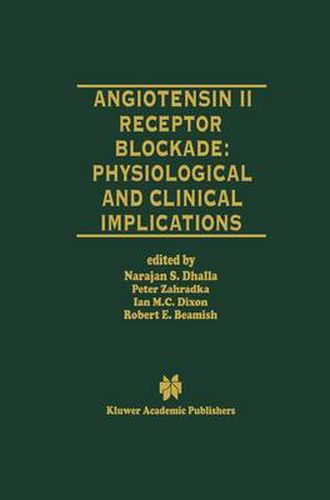Readings Newsletter
Become a Readings Member to make your shopping experience even easier.
Sign in or sign up for free!
You’re not far away from qualifying for FREE standard shipping within Australia
You’ve qualified for FREE standard shipping within Australia
The cart is loading…






This title is printed to order. This book may have been self-published. If so, we cannot guarantee the quality of the content. In the main most books will have gone through the editing process however some may not. We therefore suggest that you be aware of this before ordering this book. If in doubt check either the author or publisher’s details as we are unable to accept any returns unless they are faulty. Please contact us if you have any questions.
The relationship between angiotensin II and hypertension was established in 1898 when angiotensin II was shown to modulate systemic blood pressure. Over the intervening decades, a complete characterization of the renin-angiotensin system (RAS) has been achieved, and our understanding of its biochemistry and physiology has led to the directed development of agents such *as ACE inhibitors and receptor antagonists capable of controlling hypertension. More recently, it was shown that angiotensin II is secreted within certain tissues and that these tissue-specific systems operate independently of the systemic RAS. The novel concept that angiotensin II regulates a number of cardiovascular processes that are unrelated to blood pressure has renewed the interest of both basic and clinical scientists in angiotensin II. The association between angiotensin II and cardiac growth, in particular, has indicated that therapies currently in use for hypertension may have direct application to the treatment of heart failure. The Manitoba Cardiovascular Forum on Angiotensin Receptor Blockade in Winnipeg was convened October 18-20, 1996 to examine the clinical and basic aspects of angiotensin receptor biology as they apply to hypertension and heart failure. In addition, the potential treatment of these conditions using specific angio tensin receptor antagonists was addressed within the context of their immediate therapeutic application and future potential.
$9.00 standard shipping within Australia
FREE standard shipping within Australia for orders over $100.00
Express & International shipping calculated at checkout
This title is printed to order. This book may have been self-published. If so, we cannot guarantee the quality of the content. In the main most books will have gone through the editing process however some may not. We therefore suggest that you be aware of this before ordering this book. If in doubt check either the author or publisher’s details as we are unable to accept any returns unless they are faulty. Please contact us if you have any questions.
The relationship between angiotensin II and hypertension was established in 1898 when angiotensin II was shown to modulate systemic blood pressure. Over the intervening decades, a complete characterization of the renin-angiotensin system (RAS) has been achieved, and our understanding of its biochemistry and physiology has led to the directed development of agents such *as ACE inhibitors and receptor antagonists capable of controlling hypertension. More recently, it was shown that angiotensin II is secreted within certain tissues and that these tissue-specific systems operate independently of the systemic RAS. The novel concept that angiotensin II regulates a number of cardiovascular processes that are unrelated to blood pressure has renewed the interest of both basic and clinical scientists in angiotensin II. The association between angiotensin II and cardiac growth, in particular, has indicated that therapies currently in use for hypertension may have direct application to the treatment of heart failure. The Manitoba Cardiovascular Forum on Angiotensin Receptor Blockade in Winnipeg was convened October 18-20, 1996 to examine the clinical and basic aspects of angiotensin receptor biology as they apply to hypertension and heart failure. In addition, the potential treatment of these conditions using specific angio tensin receptor antagonists was addressed within the context of their immediate therapeutic application and future potential.